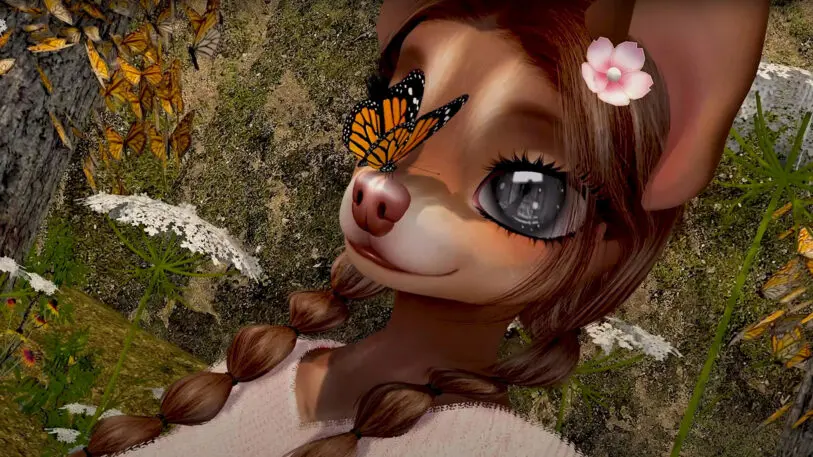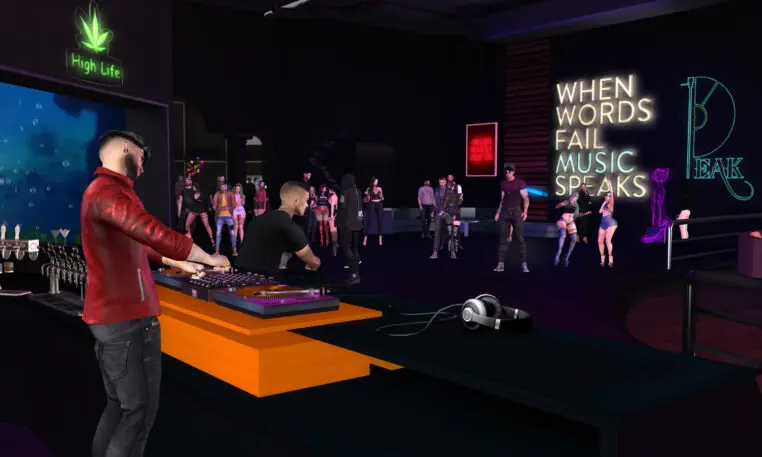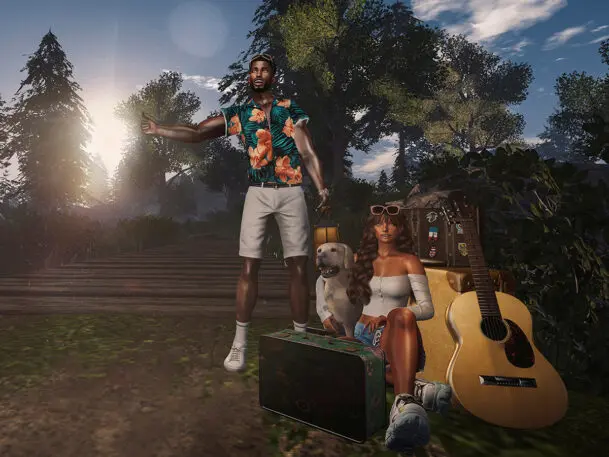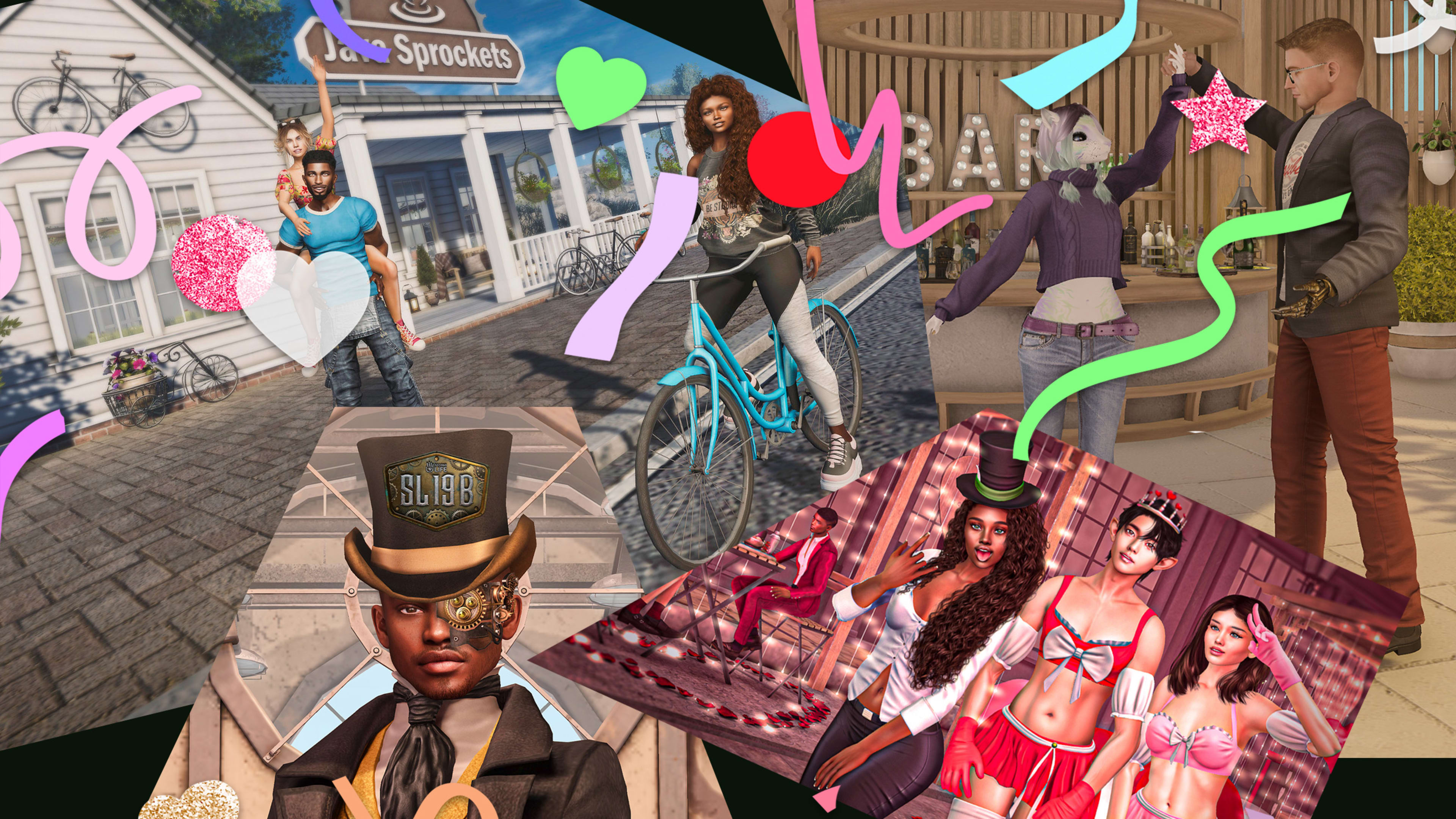This coming week, hundreds of thousands of people are expected to congregate with their avatars in Second Life to celebrate the pioneering virtual world’s 20th birthday. There will be live music, DJs, dance performances, and a massive bazaar with more than 1,000 vendors hawking avatar clothing and other digital creations. In years past, up to 300,000 people attended this two week-long birthday bash. This year, participation is expected to be even higher.
“There are a lot of people that have been in Second Life for 20 years now,” says Second Life founder Philip Rosedale, who expects the event to be part virtual World’s Fair, part reunion. “It’ll be exciting,” he promises.
The birthday party will undoubtedly also be a point of reflection, both for Second Life insiders and industry observers alike. On the one hand, the event is expected to draw a crowd that’s larger than the user base of some VR metaverse platforms, including Meta’s Horizon Worlds.
But it’s also a stark reminder that Second Life never lived up to its own hype. Once heralded as the future of the internet—attracting investments from Amazon founder Jeff Bezos and Ebay founder Pierre Omidyar—the platform currently has 750,000 monthly active users, according to Second Life owner Linden Lab. “By most metrics, it’s about the biggest it’s ever been,” says Rosedale.
For comparison: Facebook, which launched two years after Second Life, ended its most recent quarter with three billion monthly active users. “Virtual worlds are not yet for everyone,” admits Rosedale. “They’re not, in fact, for a majority of people.”

That admission stands in stark contrast to the early enthusiasm around Rosedale’s creation. Its 2003 launch was inspired by Burning Man, the celebration of community and self expression that draws thousands to the Nevada desert every year. Much like Burning Man, Second Life positioned itself as a blank canvas, inviting people to be anyone and do anything they wanted.
“It had the most powerful creation tools, enabling users to basically create anything that they could imagine,” says Wagner James Au, author of the forthcoming book Making a Metaverse That Matters.
Some of its more prolific creators used those tools to build impressive 3D environments, including detailed re-creations of real-life cities, serene Zen gardens, hip nightclubs, and post-apocalyptic wastelands. Others specialized in avatar clothing and accessories that they sold on the platform. Second Life sees $650 million worth of peer-to-peer transactions every year, with 1.6 million transactions happening every single day, according to a Linden Lab spokesperson.
But while some early adopters flourished, many others were turned off by Second Life’s open-endedness and lack of direction. “It intimidated and overwhelmed 99% of the people who tried it,” Au says.
Three years after Second Life’s launch, another virtual world emerged with a much more guided approach. Roblox also empowered its users to create their own worlds, but put a heavy emphasis on casual gaming. That recipe drew a much younger, but also vastly larger, crowd: At the end of March, Roblox was used by 66 million people every single day. “The reason that Roblox is so big is because it’s basically Second Life, but for little kids,” Rosedale says, somewhat dismissively.

Linden Lab, on the other hand, wanted Second Life to be a place for grown-ups, which is why it tried hard not to be confused with a video game. That was a massive mistake, argues Au, and one that other metaverse platform creators can learn from. Much as in the real world, games function as icebreakers between strangers. “You need some fun activities,” he says. “It should always be a playful, game-like experience.”
Roblox also benefited from betting early on mobile; Second Life is only getting ready to launch a smartphone app this year. “We missed mobile,” admits Rosedale.
The company did briefly work on a separate virtual world optimized for VR headsets, but sold off those efforts in 2020. These days, Second Life is increasingly competing with headset-optimized virtual worlds such as VRChat and Rec Room. Meta has struggled to gain traction with its own Horizon Worlds service, but is reportedly in talks with Roblox about bringing the service to its Oculus headsets.

Apple, meanwhile, has shied away from using the metaverse terminology (opting instead for “spatial computing”), but the launch of its Vision Pro headset next year will likely further accelerate the growth of immersive virtual worlds.
Whether Second Life will ever be a part of those efforts remains to be seen. Rosedale has been a notable VR skeptic and remains concerned about motion sickness and other issues with the technology, but he has been experimenting with some VR tech in recent months.
Au believes that Second Life will make its mark on the future of the metaverse in one way or another. “There is still an opportunity to grow it beyond its hardcore user base,” he says. “They’ve definitely laid the path for others to follow.”
Recognize your brand’s excellence by applying to this year’s Brands That Matter Awards before the early-rate deadline, May 3.
